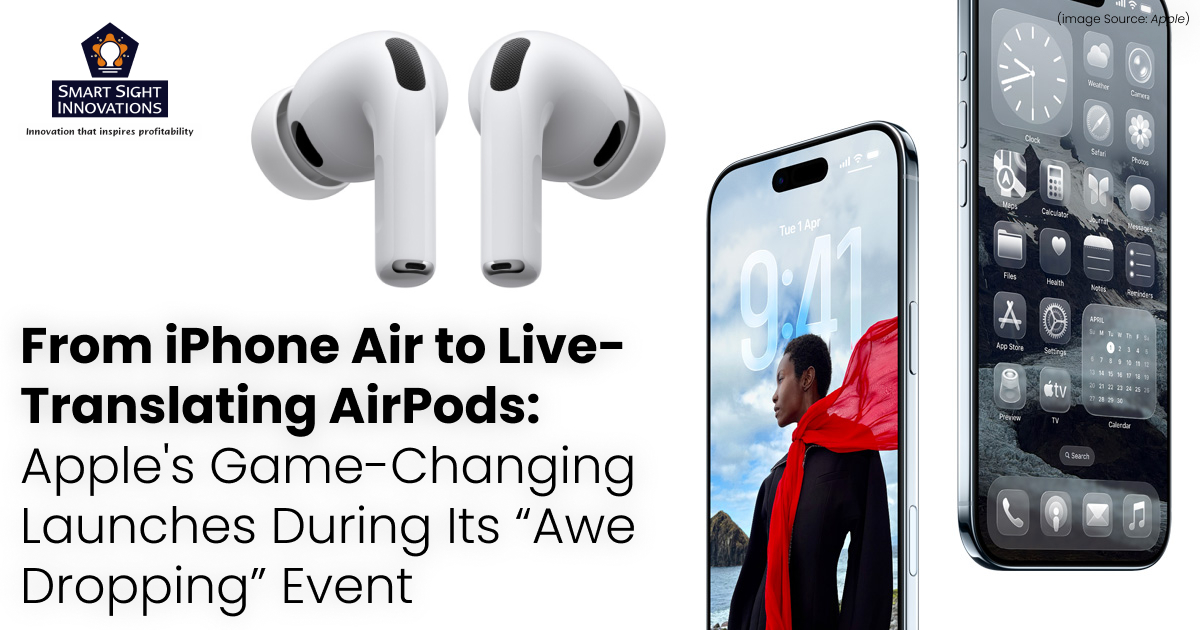
Apple made history on September 9, 2025, with what CEO Tim Cook called the “biggest leap ever for iPhone” during the company’s “Awe Dropping” hardware event at its Cupertino campus. The tech giant unveiled a revolutionary new lineup that includes the ultra-thin iPhone Air, the first substantial addition to the iPhone family since the iPhone X launched in 2017, alongside significant updates across its entire product ecosystem.
The event marked Apple’s bold response to intensifying competition from Google and Samsung in the rapidly evolving smartphone market, where foldable devices and artificial intelligence features are reshaping consumer expectations. With iPhones representing 49% of all smartphones shipped to the U.S. in the second quarter of 2025, Apple’s latest innovations aim to maintain its commanding position while addressing emerging market trends.
Revolutionary iPhone Air: Redefining Smartphone Design

(Images Source: Apple)
The star of Apple’s presentation was undoubtedly the iPhone Air, a device that represents a fundamental shift in smartphone design philosophy. At 5.6 millimeters thick, it stands as the thinnest iPhone ever made, positioning Apple directly in competition with Samsung’s Galaxy S25 Edge.
The iPhone Air is 0.2 millimeters slimmer than the Galaxy S25 Edge, which Samsung began selling in May, marking Apple’s aggressive entry into the ultra-thin smartphone segment.
This engineering marvel comes with thoughtful design compromises that Apple has carefully balanced to maintain functionality while achieving its remarkably slim profile. The device features just one camera compared with three on the iPhone 17 Pro, reflecting the physical constraints of its ultra-thin design.
Additionally, it has shorter advertised battery life, at 27 hours of video playback, compared with the standard iPhone 17’s 30 hours.
The iPhone Air features a substantial 6.6-inch display that incorporates 120Hz ProMotion technology, bringing premium display capabilities to a new form factor. The device is constructed with a titanium body that contributes to both its premium feel and structural integrity despite its minimal thickness.
Pricing for the iPhone Air starts at $999, positioning it as a premium alternative within Apple’s lineup that appeals to users who prioritize cutting-edge design aesthetics. The device will be available for pre-order starting September 12, with general availability beginning September 19.
iPhone 17 Series: Elevating the Standard
Apple’s iPhone 17 lineup represents a significant evolution of the company’s smartphone strategy, with substantial improvements across all models that blur traditional distinctions between standard and professional tiers.
iPhone 17: Premium Features for Everyone
The standard iPhone 17 received what Apple describes as a comprehensive makeover designed to align more closely with Pro model capabilities. The device features the new Center Stage front camera that takes selfies to the next level; a powerful 48MP Fusion Main camera with an optical-quality 2x Telephoto; and a new 48MP Fusion Ultra Wide camera that captures expansive scenes and macro photography.
One of the most significant upgrades is the inclusion of ProMotion display technology, bringing 120Hz refresh rates to the standard model for the first time. This enhancement delivers smoother scrolling and video playback that was previously exclusive to Pro models, representing a democratization of premium display technology across Apple’s lineup.
The iPhone 17 also incorporates a 24-megapixel front-facing camera with a six-element lens system, a substantial upgrade from the 12-megapixel cameras in previous generations. This improvement addresses the growing importance of front-facing cameras for social media content creation and video calling applications.
Battery performance has been enhanced to deliver 30 hours of video playback, maintaining Apple’s commitment to all-day battery life while supporting the increased power demands of the ProMotion display and improved camera systems.
The iPhone 17 maintains its starting price of $799, the same as its predecessor, providing consumers with significantly enhanced capabilities without a price increase. Some of these features include a larger storage capacity at 256 GB, improved camera and display capabilities, and a longer battery life.
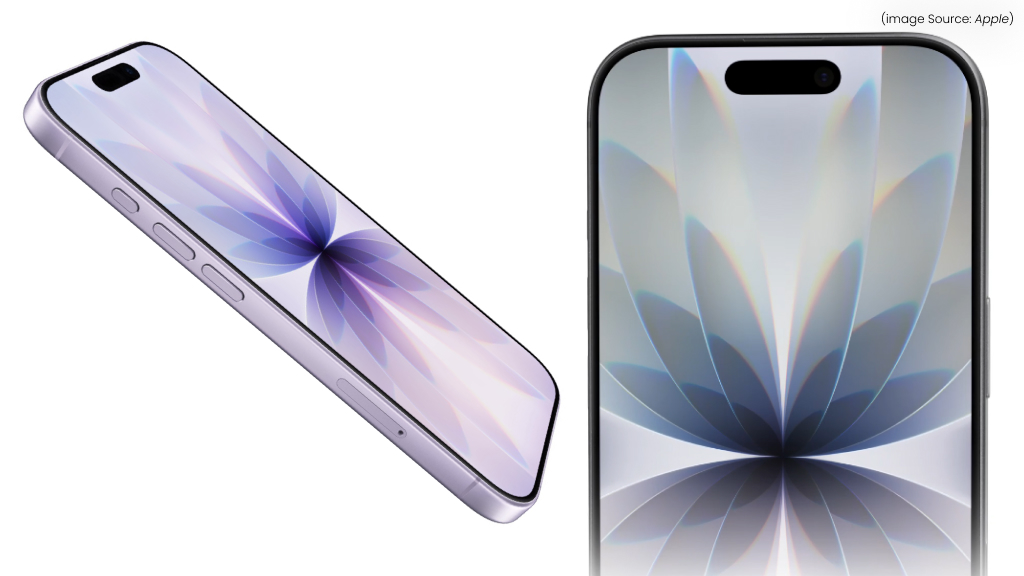
(Images Source: Apple)
iPhone 17 Pro and Pro Max: Professional Excellence Redefined
The Pro models showcase Apple’s most advanced smartphone technology, with innovations that set new benchmarks for mobile photography, performance, and display quality.
The devices feature three 48MP cameras — Main, Ultra Wide, and an all-new Telephoto — offering the equivalent of eight lenses, including the longest optical-quality zoom ever on iPhone at 8x. This represents a significant advancement over previous generations, with the telephoto lens providing unprecedented zoom capabilities for mobile photography.
The camera system has been completely redesigned with what sources describe as a new rectangular camera array that spans the full width of the device’s back panel. This design departure, reminiscent of Google’s Pixel aesthetic, provides improved optical performance while creating a distinctive visual identity for the Pro models.
The innovative 18MP Center Stage front camera takes selfies to the next level, incorporating advanced computational photography features that leverage the A19 Pro chip’s enhanced image processing capabilities.
Display improvements include brighter peak brightness levels and an anti-reflective coating that enhances outdoor visibility. The Pro models also incorporate a vapor chamber cooling system that maintains optimal performance during intensive tasks, addressing thermal management challenges that have affected previous generations.
In the U.S., the iPhone 17 Pro starts at $1,099 with 256GB of storage, and the iPhone 17 Pro Max starts at $1,199 with 256GB of storage, representing a $100 price increase over previous generation base models. However, this pricing reflects doubled base storage capacity, with Apple eliminating the 128GB option in favor of starting configurations at 256GB.
The Pro models will be available in new color options and feature enhanced battery life, with the Pro Max expected to deliver Apple’s longest battery life in any iPhone to date.
Apple Watch Series 11: Health Innovation at Your Wrist
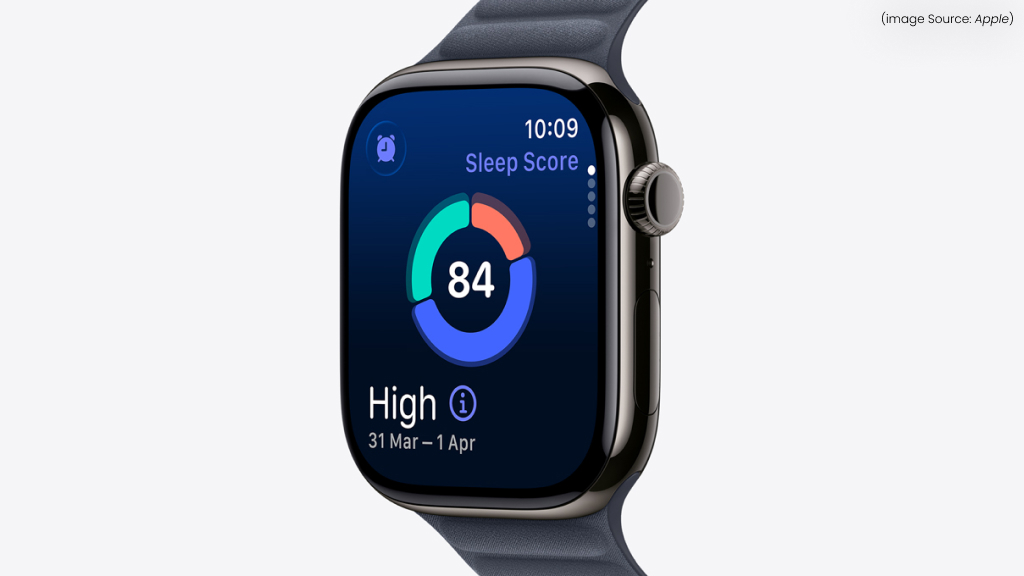
(Images Source: Apple)
Apple’s commitment to health and wellness technology takes a significant leap forward with the Apple Watch Series 11, which introduces groundbreaking health monitoring capabilities that could transform how users understand and manage their wellbeing.
The watch comes with a new feature that the company says can detect hypertension, which Apple says it’s working to clear with the Food and Drug Administration. This represents a potentially transformative addition to the Apple Watch’s health monitoring suite, as hypertension affects millions of Americans and often goes undetected until serious complications arise.
The hypertension detection technology builds upon the Apple Watch’s existing heart rate monitoring capabilities, using advanced algorithms to analyze cardiovascular patterns and identify potential blood pressure irregularities. While awaiting FDA approval, this feature demonstrates Apple’s commitment to expanding health monitoring beyond fitness tracking into serious medical condition detection.
On top of blood pressure-sensing technology, the Series 11 will offer richer sleep measurements, assigning a sleep score to each night’s sleep for users who wear the watch to bed. This enhanced sleep tracking provides users with comprehensive insights into sleep quality, duration, and patterns, integrating with Apple’s broader health ecosystem to provide personalized recommendations for improved rest.
The Apple Watch Series 11 also incorporates new Apple Intelligence-powered features, including a “workout buddy” that uses heart rate and calorie burn data to create personalized motivation prompts during exercise sessions. This AI-driven coaching system adapts to individual fitness patterns and goals, providing real-time encouragement and guidance.
The watch, available Sept. 19 for $400, maintains the same pricing as its predecessor while delivering substantially enhanced health monitoring capabilities.
Additional models in the Apple Watch lineup include the updated Apple Watch SE starting at $249 and the Apple Watch Ultra 3, which incorporates enhanced outdoor functionality and extended battery life for extreme sports and adventure activities.
AirPods Pro 3: Breaking Language Barriers
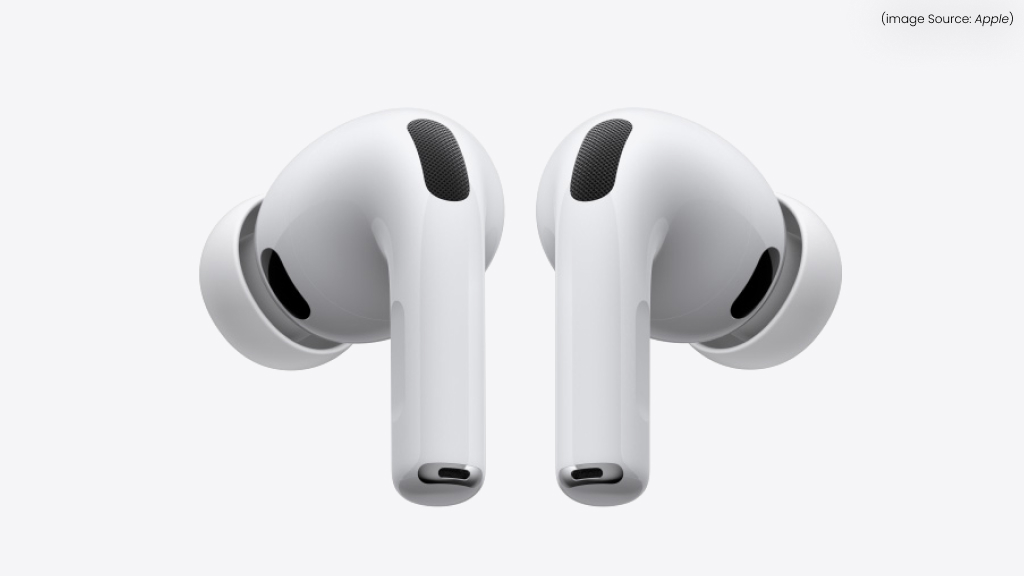
(Images Source: Apple)
Apple’s audio innovation reaches new heights with the AirPods Pro 3, which introduces capabilities that extend far beyond traditional wireless earbuds into the realm of real-time communication assistance.
The most exciting feature of the earbuds is a new live translation capability, fueled by Apple’s AI technology, Apple Intelligence. According to Apple, the device will allow users to listen to live audio and receive near-instantaneous playback in their preferred language. This groundbreaking feature transforms the AirPods Pro 3 into a universal communication tool, potentially eliminating language barriers in real-world conversations and media consumption.
The live translation system works by processing incoming audio through Apple’s on-device AI processing capabilities, ensuring privacy while delivering rapid translation between supported languages. This feature represents a significant advancement over existing translation applications, which typically require manual activation and don’t integrate seamlessly into natural conversation flow.
Beyond translation capabilities, Apple also says the AirPods Pro 3 will be more durable and have longer battery life than previous generations. These improvements address common user concerns about wireless earbuds, particularly regarding longevity and reliability in various environmental conditions.
The AirPods Pro 3 incorporates Apple’s new H3 chip, which enhances active noise cancellation performance and enables the advanced AI processing required for real-time translation. The chip also improves adaptive audio features, automatically adjusting sound profiles based on environmental conditions and user preferences.
Apple fans can preorder the new AirPods, available Sept. 19, for $249, maintaining the same pricing as the previous generation while delivering substantially enhanced functionality.
Pricing Strategy and Market Positioning
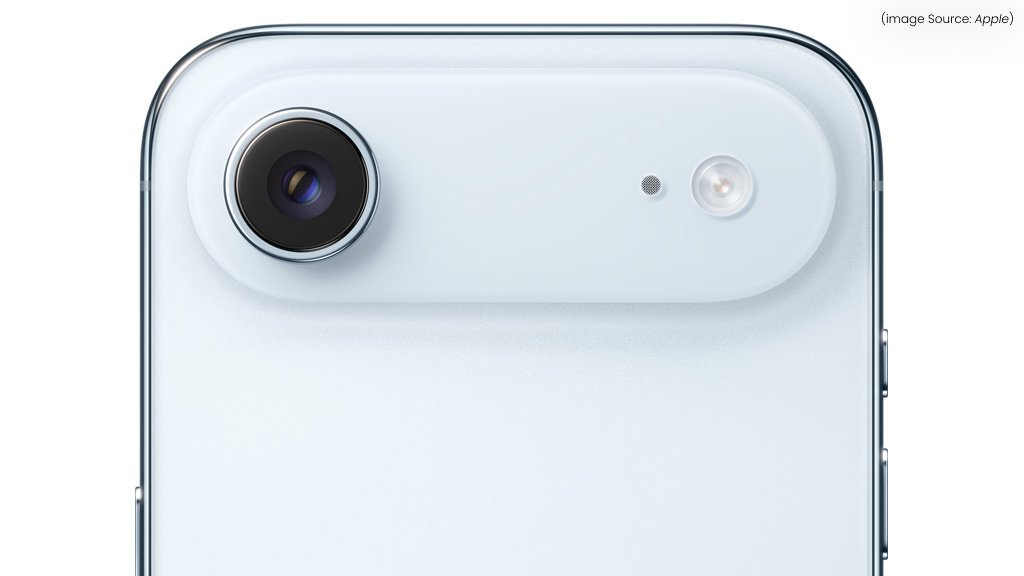
(Images Source: Apple)
Apple’s pricing strategy for the new product lineup reflects a careful balance between maintaining competitive positioning and acknowledging increased manufacturing costs in the current global economic environment.
The iPhone 17 starts at the same price point as the iPhone 16: $799, demonstrating Apple’s commitment to keeping its entry-level flagship accessible to consumers. However, the Pro models now start at $100 more, now $1,099. That baseline model, however, will have double the capacity of its predecessor, starting at 256GB of storage, compared with just 128 on last year’s base model.
This pricing adjustment reflects both increased component costs and enhanced capabilities across the Pro lineup. The elimination of lower storage tiers acknowledges the reality of modern smartphone usage, where high-resolution video recording, 4K content consumption, and expanding app ecosystems require substantial storage capacity.
Pricing on its accessories largely stayed the same, with the new AirPods Pro 3 costing the same as its predecessor, at $249. An updated version of its Apple Watch SE, its cheapest model, also held its price point, beginning at $249.
The pricing strategy operates against a complex backdrop of international trade considerations. The word “tariff” was never mentioned in the Apple keynote Tuesday, but the event was the first major hardware reveal since recent tariff hikes around the world. Apple appears to have successfully navigated potential tariff impacts through strategic manufacturing partnerships and diplomatic engagement.
Apple Intelligence: Measured AI Integration
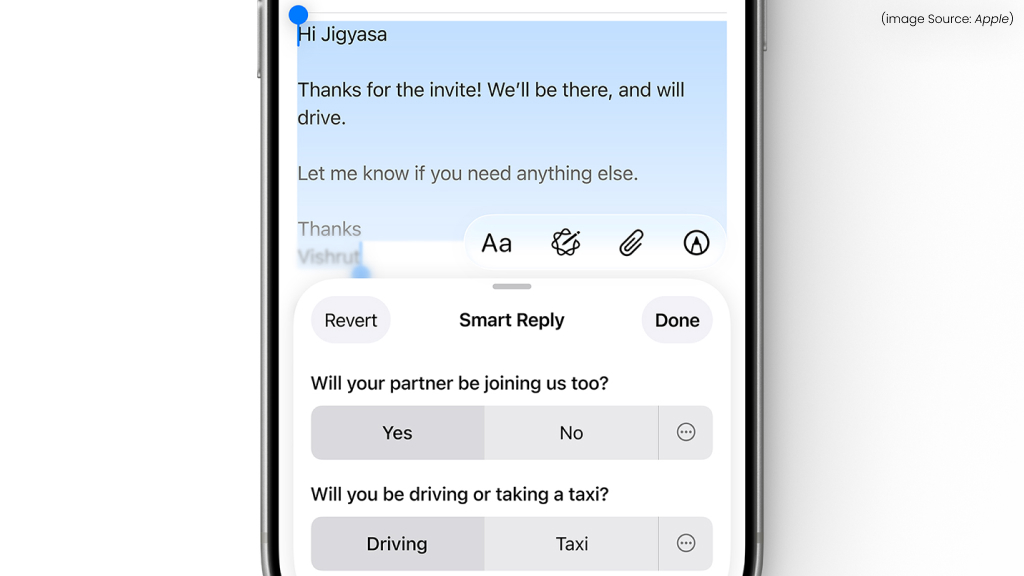
(Images Source: Apple)
While artificial intelligence dominated much of the technology industry’s narrative throughout 2025, Apple’s approach to AI integration remains characteristically measured and privacy-focused.
Apple unveiled its play on artificial intelligence, called Apple Intelligence, at a splashy software event last year. Over a year later, many of the features it promised have yet to arrive in full force on iPhones. This cautious rollout reflects Apple’s commitment to ensuring AI features meet the company’s standards for reliability and user privacy before widespread deployment.
The AI features introduced at the September event focus on practical applications that enhance existing device capabilities rather than replacing human decision-making. The live translation feature in AirPods Pro 3 and the workout coaching system in Apple Watch Series 11 exemplify this approach, using AI to augment user experiences while maintaining human agency and control.
Those AI features are slightly less ambitious than Google’s Pixel products, which allow users to flip cameras on and ask chatbots open questions about what the phones are seeing. This comparison highlights Apple’s more conservative approach to AI integration, prioritizing privacy and reliability over cutting-edge capabilities that might compromise user data security.
Apple’s AI strategy faces challenges in talent retention, as Bloomberg reported, several major staff members on Apple’s AI projects have left the company as competitors like Meta poach top talent. This talent migration reflects the intense competition for AI expertise across the technology industry.
Competitive Landscape and Market Impact
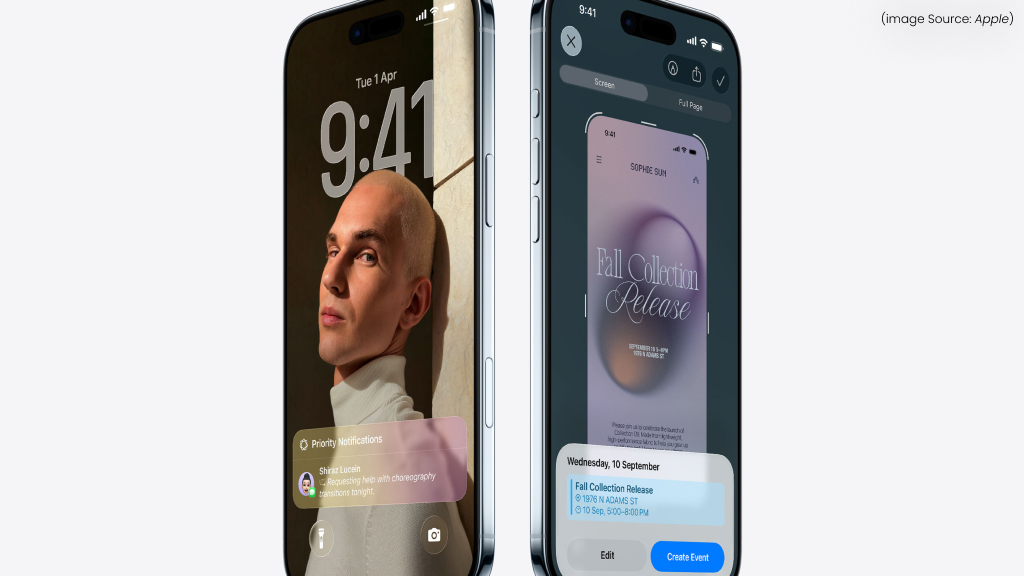
(Images Source: Apple)
The September 9 event occurs within a rapidly evolving competitive landscape where traditional smartphone market dynamics are being challenged by new form factors and enhanced AI capabilities.
Samsung shipments to the U.S. grew from 23% to 31%, narrowing Apple’s lead compared to the previous year, indicating increased competition in the premium smartphone segment. Samsung’s success with foldable devices like the Galaxy Z Flip7 and Galaxy Z Fold7 demonstrates consumer interest in innovative form factors and advanced AI features.
Apple’s introduction of the iPhone Air represents a direct response to this competitive pressure, offering consumers a distinctive form factor that differentiates Apple’s lineup while maintaining the company’s design philosophy. The ultra-thin profile positions Apple as an innovator in smartphone design, potentially influencing industry trends toward slimmer devices.
The comprehensive product updates across Apple’s ecosystem demonstrate the company’s strategy of deep integration between devices, creating switching costs for consumers and reinforcing brand loyalty. The seamless integration between iPhone, Apple Watch, and AirPods creates a user experience that competitors struggle to match with their more fragmented product ecosystems.














